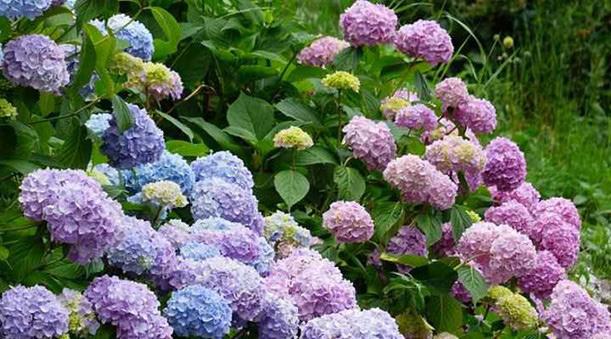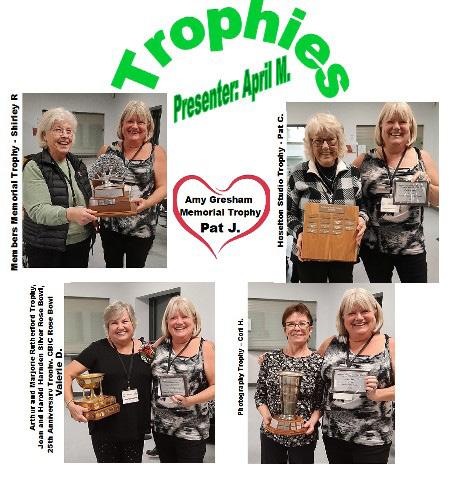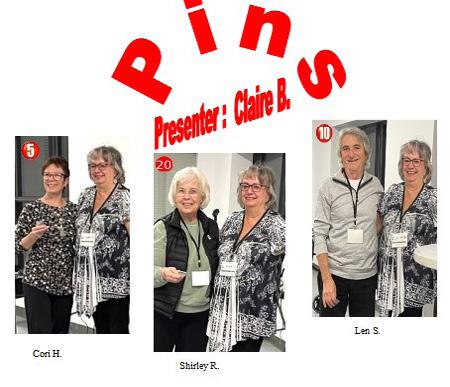

APPLE COUNTRY GARDEN CLUB
CRAMAHE HORTICULTURAL SOCIETY YEAR BOOK 2024
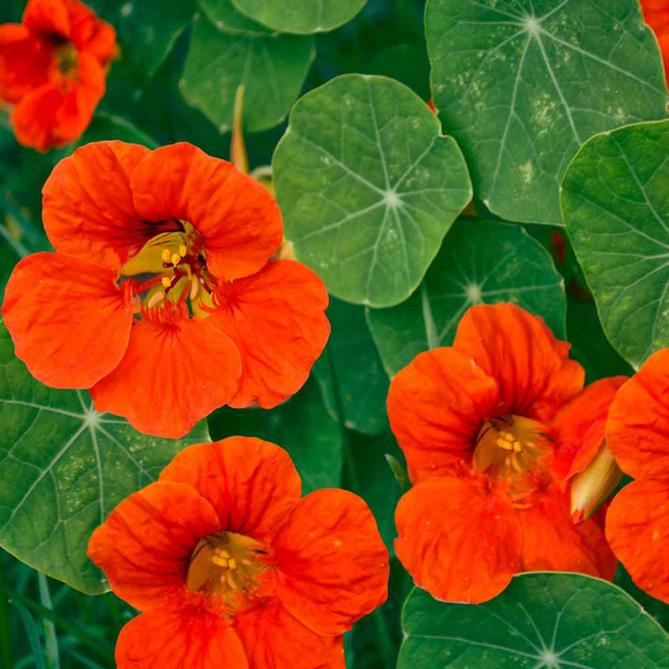
Flower of the Year – Orange Nasturtium
CRAMAHE HORTICULTURAL SOCIETY
OFFICERS FOR 2024
President Sharron MacDonald 905 355 2691 sharronstart@gmail.com
Past President Jim Detenbeck 905 355 5266 detenbeckgary@gmail.com
Vice President Catherine Kaye 416 320 4401 ckaye@gmail.com
Secretary Trish O’Brien 905 355 2338 twillow_51@hotmail.com
Treasurer Clair Breton 905 355 5133 clairbreton@bell.net
DIRECTORS FOR 2024
Advertising & Publicity
Shannon Shea 905 355 3560 shannon.shea22@gmail.com
Ecology Garden Len Salvati 905 355 5133 len.ls@bell.net
Community Garden Len Salvati 905 355 5133 len.ls@bell.net
Librarian Valerie Detenbeck 905 355 5366 valerie.detenbeck@gmail.com
Membership Clair Breton 905 355 5133 clairbreton@bell.net
Newsletter Shannon Shea 905 355 3560 shannon.shea22@gmail.com
Telephoning Valerie Detenbeck 905 355 5266 valerie.detenbeck@gmail.com
Show Awards Chair April Mackey 289 691 6473 mackeya27@yahoo.ca
Speakers’ Chairperson
Pat Campbell 905 376 6926 edpat70@gmail.com
Sharron MacDonald 905 355 2691 sharronstart@gmail.com
Sunshine Valerie & Jim Detenbeck 905 355 5266 valerie.detenbeck@gmail.com
CONVENORS
Social Convenor
May Flower Show
June Flower Show
Sept. Flower/Vegetable/ Decorative Show
Oct. Photography Show
Year Book
Plant Sale
Hanging Baskets
Ingrid Anderson 416 526 3033 ingridanderson1489@gmail.com
Clair Breton and 905 355 5133 clairbreton@bell.net
Len Salvati len.ls@bell.net
Karen Prins 905 355 1309 theqqc@gmail.com
JoAnne Titus 905 344 7484 garyandjoannetitus@gmail.com
Valerie Detenbeck 905 355 5266 valerie.detenbeck@gmail.com
Sharron MacDonald 905 355 2691 sharronstart@gmail.com
Sharron MacDonald 905 355 2691 sharronstart@gmail.com
Winter Greenery Trish O`Brien 905 355 2338 twillow_51@hotmail.com
Financial Reviewers/Auditors JoAnne Titus and Barrie Wood
OHA, the Ontario Horticultural Association, is led by a member elected executive and 19 District Directors. President: Sharlene DesJardins
Cramahe Horticultural Society is a part of OHA District 4. Our District is led by: District Director: Dennis Miluck, district4@gardenontario.org
Assistant Directors: Sharron MacDonald, Kathy Armstrong, Kathy Allam, Ralf Busse Secretary: Bev Silk Treasurer: Leslie Hollick
Email: cramahe.hort@gmail.com • Websites: www.cramahehort.ca; www.gardenontario.org.
Follow us on Facebook: Cramahe Horticultural Society
The OHA is the umbrella organization for 19 Districts and 270 societies that more than 30,000 gardeners belong to. It provides support, programs, a newsletter, insurance, networking opportunities, a conference, awards, youth activities and a judging school for its societies and members. Its website is gardenontario.org
Our District 4 is made up of 17 horticultural societies in:
Bobcaygeon Cramahe Lakefield Norland
Brighton Ennismore Lindsay Norwood
Campbellford Fenelon Falls Minden Peterborough
Coboconk Grafton Omemee Port Hope Cobourg
Email: cramahe.hort@gmail.com • Websites: www.cramahehort.ca; www.gardenontario.org
Follow us on Facebook: Cramahe Horticultural Society
PRESIDENT’S MESSAGE
Well, here we are at the end of another great year for the Apple Country Garden Club. We have had a year filled with exciting speakers, workshops, potluck dinners and mystery tours. We saw our membership take a bit of a dip this year, but I think some people are still hesitant to be in crowds because of Covid. Hopefully our upcoming year will see more members in the club. We had some very interesting speakers this year and we learned about how to prepare for a Flower Show, Lavender, Air Plants, Slips, Tips and Tricks with Perennials, Connon Nursery gave a great design demonstration for our yards, Wildscaping – Landscaping with Lawn Alternatives, and finally, Quinn’s Blooms did a Fall Centerpiece workshop with us. We had a very successful Plant Sale in May and lot`s of plants and shrubs went to their new homes. A big Thank you to everyone who participated in the plant sale, from the plant diggers to the people who sold all the plants … well done!! We planted up the baskets for the main street and the park. We did a Spring clean-up of the Gazebo Garden, the garden at the Art Gallery, the garden at the townhall in Castleton and the Ecology Garden. These gardens are maintained by a dedicated group of people throughout the Spring and Summer and a big thank you goes out to everyone involved with helping to keep our communities looking so good. 2023 was again declared the Year of the Garden and the colour purple was chosen, so we planted purple flowers and the club picked Cosmos as their Flower of the Year. In July, 8 members went on tour to Anna’s Perrenials in Lindsay. Wow, she has so many different gardens and they are all very interesting. After we left Anna’s, we went into Bobcaygeon and had our bag lunches by the river. A very nice day! In August, we had our Annual Potluck dinner at the Ecology Garden. It is always interesting to see what gourmet delights are going to be on the table. Gardeners can rock cooking as well. It was a nice time to get back together, and it then leads us back to our meetings in September.
I would like to thank the team that prepared the planters with the Winter greenery for the street and park, and for the planters in Castleton. They were all ready for the Santa Claus Parade. Well done!! This year we are taking on a new project at the Keeler Centre. We are putting in a new garden under the electronic sign out near the road.
As always, all this work would not have been possible without the support of the Executive, who listen to my sometimes-wacky ideas, and they always have my back. Also, big thanks to the members who support our visions and come out to help get things done. None of this would happen without your help. It makes our community look great and keeps our club running at the best of its ability!
I am looking forward to 2024 and for another exciting year for the Apple Country Garden Club.
Sharron
WE GRATEFULLY ACKNOWLEDGE THE SUPPORT OF THE CRAMAHE TOWNSHIP COUNCIL AND THE ONTARIO MINISTRY OF AGRICULTURE, FOOD, AND RURAL AFFAIRS.
PROGRAM, SHOW DATES & SPECIAL EVENTS
Meetings are held at 7:00 p.m. on the fourth Tuesday at the Keeler Centre. Note change of time Jan-March. A show-off table will be available each month.
JANUARY Tuesday 23 What Plants Eat
At 1:30 pm GARY WESTLAKE
FEBRUARY Tuesday 27
At 1:30 pm
MARCH Tuesday 26
Members Meeting
Garden Start Up & Season Extension – Seed Exchange At 1:30 pm JON FAULKNOR
Members bring in seeds to exchange.
APRIL Saturday 6 OHA District 4 AGM, Omemee/Lindsay
Monday 22 Earth Day
Tuesday 23
At 7:00 pm
Members Meeting
MAY Friday 3 Ecology Garden Clean-up
Tuesday 28 The Magic of Mushrooms & Other Fungi
At 7:00 pm JOANNE HOWES
Mini Spring Flower Show (judged by members)
Conveners: Clair Breton and Len Salvati
Saturday 25 PLANT SALE
Victoria Square, Colborne. Gently used garden items welcome.
JUNE
Wednesday 12
Saturday 15
Tuesday 25
At 7:00 pm
OHA District 4 – Lunch & Awards, and Skills Update
Four Club Garden Tour – Cramahe Hosting
SUMMER FLOWER SHOW – Convener: Karen Prins
Judge will remain after show to discuss the results of the show.
JULY Tuesday 23 Tour – TBA
AUGUST Tuesday 27
SEPTEMBER Tuesday 24
At 7:00 pm
Picnic Potluck at the Ecology Garden
Convener: Sharron MacDonald
Photography – Tips For Photographing Plants For Shows and Enjoyment
Donna Edwards – Photographer
Vegetable and Decorative Flower Show
Convener: Jo-Anne Titus
Nominations for Officers for 2024
OCTOBER Tuesday 22 All About House Plants
At 7:00 pm
Saturday 19
NOVEMBER Tuesday 26
Jennifer Guertin
PHOTOGRAPHY SHOW, Convener: Valerie Detenbeck
Nominations for Officers for 2024
OHA District 4 Fall Seminar, Minden
CHS ANNUAL GENERAL MEETING, Potluck, and Awards
Dinner at 6:00 pm – Doors open at 5:00 pm
Election and Installation of Officers for 2024
OHA SERVICE AWARDS
Many members have dedicated themselves to improving our society.
The members listed below were presented with OHA Service Awards after serving over ten years towards the success of our Society:
1976 – Amy Gresham
1977 – Helen Rose
1978 – Cora Reid
1980 – Gordon Smith
1981 – Linda Mitchell
1982 – Elizabeth Rutherford
1983 – Harry Mayne
1984 – Shirley and Bob Griffith
1985 – Marjorie Vaughan
1986 – Ida Mills
1987 – Cicely Scroggs
1988 – Beatrice Turney
1989 – Gloria Taube
1990 – Peg Tozek, Harold & Ada Winter
1991 – Harold and Gladys Black
1992 – Helen Dance
1993 – Mary Bloomer
1994 – Kay Island
1995 – Ivy and George Maskell
1996 – Irene Osborne
1997 – Joyce Murray
1998 – Vi Morrison
1999 – Jean and Jacques Filteau
2003 – Agnes Lee
2004 – Gayle Barrett
2006 – Mary Jackson
2007 – Sandra Compton
2008 – Jill and John Sellers
2012 – Lenna Broatch
CHS LIFE MEMBERS
Sandra Compton, Irene Osborne, Jo-Anne Titus, June Johnson, Shirley Ross, Sharron MacDonald
IN MEMORIAM
CHS purchases a magazine subscription, the Ontario Gardener, for the Cramahe Libraries in remembrance of past members. It is CHS policy to enter the names of deceased member into the OHA Book of Remembrance along with a donation. Funds raised from these donations are returned to Societies by OHA in the form of a number of awards towards the planting of trees.
CHS FLOWER OF THE YEAR
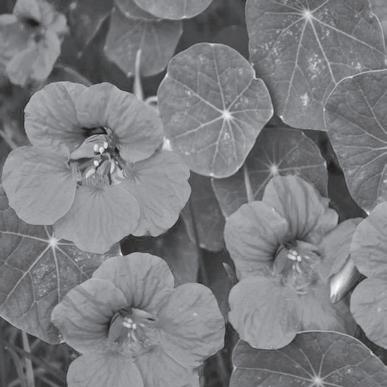
Nasturtium (/nəˈstɜːrʃəm/) is a genus of a small number of plant species in the family Brassicaceae (cabbage family) commonly known as watercress or yellowcress. The best known species are the edible Nasturtium officinale and Nasturtium microphyllum. Nasturtium was previously synonymised with Rorippa, but molecular evidence supports its maintenance as a distinct genus more closely related to Cardamine than to Rorippa sensu stricto.
These plants are related to garden cress and mustard, noteworthy for a peppery, tangy (pungent) flavor. The name Nasturtium comes from the Latin nasus tortus, meaning “twisted nose”, in reference to the effect on the nasal passages of eating the plants. Nasturtium foliage is used as food by the caterpillars of certain Lepidoptera, including Orthonama obstipata (The Gem).
FLOWER OF THE YEAR HISTORY
2000 – Begonia
– Geranium
– Lily
– Daisy
– Clematis
– Cactus 2006 – Marigold
2007 – Rose
2008 – Flowering Shrub
2009 – Native plants and Trees
2010 – Annual Aster
2011 – Bergamot
2012 – Salvia
2013 – Allium
2014 – Iris
2015 – Peony
2016 – Lupin
2017 – Gladiolus
2018 – Dahlia
2019 – Phlox
2020 – Bellflower (Campanula)
2021 – Shasta Daisy
2022 – Red Begonia
2023 – Cosmos
2024 – Orange Nasturtium
FLOWER SHOW RULES
GENERAL
1. Entries may be exhibited by members only.
2. All exhibits must be created by the member and grown in the exhibitor’s garden, unless otherwise stated. Materials from roadsides, fields, streams, woods, and general countryside may be used where appropriate.
3. Exhibits must be received in good time for judging – late entries will not be accepted. (see Show Schedule). Each exhibitor must label their entries. If possible, entry tags should be filled in prior to arrival at the show location. Entries must not be removed until the end of the show.
4. Exhibitors must furnish their own containers and remove them after the show. CHS will not be responsible for loss of or damage to containers.
5. The decision of the judge(s) shall be final. At the judge’s discretion, any class which contains different varieties in the same category may be divided. Also, in any class with seven or more entries, an Honorable Mention may be awarded..
HORTICULTURAL
1. Exhibitors may place one entry only in each class.
2. When the number of blooms, sprays, etc. is stated, this must be adhered to, otherwise the entry will be disqualified. A bud showing colour is counted as a bloom. (Watch pansies particularly.) Buds are allowed on sprays. Each entry is to be shown with own foliage, attached if possible. Carefully remove any finished blooms and damaged or diseased leaves.
3. Please make sure there are no bugs of any kind on entries. If insects are discovered, the entry will be removed from the show.
4. Potted plants must be owned by the exhibitor for at least three months prior to showing.
DECORATIVE
1. No artificial flowers may be used, unless otherwise stated, and no strings or wires are permitted except in corsages.
2. Accessories may be used in any arrangement unless otherwise stated.
NOVICE EXHIBITORS - An exhibitor shall be considered a novice if he/she has never won a prize at a CHS Flower Show or at any other flower show, fair, etc. A novice may enter any class.
Please be sure to check the box under your name on your Entry Tags and your Summary of Exhibits if you are a novice. This status is valid for one year only.
DEFINITIONS: (see OHA Publication 34/2003 for complete list)
ACCESSORY: An inorganic object(s) used in a subordinate manner to enhance the design of plant material.
ANNUAL: A plant that normally completes its growth cycle from seed to seed.
ARANGEMENT: A combination of fresh/dried plant materials with/without accessories.
BLOOM: An individual flower, one to a stem. Specimen blooms should be disbudded for exhibition purposes as buds count as a bloom.
BOWL: A container that is broader at its widest part than it is high.
COLLECTION: A specified number of different cut flowers, potted plants, branches, fruits, vegetables or nuts, exhibited for cultural perfection.
CONTAINER: Any receptacle for plant material. In design classes, it is an essential component to complete the design.
CULTIVAR: Forms of plants originated or maintained only in cultivation, eg, Petunia (Sugar Daddy), Geranium (Cardinal), and Rose (Peace).
DESIGN: A combination of fresh and/or dried plant materials and accessories arranged to produce an artistic unit. A design incorporating an accessory should look incomplete if the accessory is removed.
EXOTIC: A plant that cannot be grown outdoors year round in Canada.
FOLIAGE: When the term “Own Foliage” is used, it means the kind produced by the species or cultivar of plant being exhibited. “Any Foliage” is to be interpreted as any natural foliage.
HERB: Group of plants with aromatic or savory properties, used for medicine, food, flavor, fragrance, and or dyes.
MASS DESIGN: A design with a large quantity of plant material arranged in a closed silhouette with few or no voids.
MINIATURE DESIGN: A design in a small container measuring no more than 5 inches in any direction, including container.
MINIATURE PLANT: A plant which is by nature or cultivation a miniature, and not an immature size of a normal plant.
MODERN DESIGN: A design of 3 to 5 groups of plant material, juxtaposed to give a sculptural effect. It is a creative design, characterized by bold forms, sharp contrasts. It may be a solid mass or a mass with space. Containers are bold, strong and simple in structure.
ORIENTAL STYLE: A design characterized by minimum use of plant material and careful placement of branches and flowers. Emphasis is on the lines of the flora arrangement.
PERENNIAL: A herbaceous plant that lives for more than 2 years, e.g. Peony, Phlox.
PLANTER: A number of different kinds of flowers artistically grouped growing in a single open container.
POTTED PLANT: A plant that has been growing long enough to have become established in the container in which it is shown.
SHRUB: A woody perennial that has several main stems - grows lower than a tree.
SPECIMEN: A single exhibit, i.e. plant, stem, spike, or stalk.
SPIKE: A thick, upright stem carrying several flowers, usually with short pedicels; eg, Gladiolus and Snapdragons..
SPRAY: The terminal flowering growth of an herbaceous or woody plant carried on one stem. Buds and leaves are allowed.
STALK OR STEM: A main plant structure which supports flowers, leaves, or fruit. A stalk may support several stems, e.g. Marigolds.
SUCCULENT: Any plant, including Cacti, which stores water in its fleshy stem or leaves.
VASE: A container whose height is greater than its width at its widest part.
UNDER WATER DESIGN: A design with part(s) placed under water to create interest (no definite percentage required). The entire design may not be under water.
WATERVIEWING: Design, usually a line design in a shallow container with half to two thirds of a container surface showing water.
ROSE DEFINITIONS
HYBRID TEA (Large flowered): Repeat bloomers on long stems; Peace, Tropicana. Blossoms are beautifully shaped with a high profile, making them excellent for showing. They need winter protection in our area (Zone 5).
FLORIBUNDA (Cluster-flowered): Shorter and bushier than Hybrid Teas, Floribundas have large distinctive clusters of blossoms, e.g. Fashion, Apricot Nectar. These make great mass plantings, in beds or in borders.
GRANDIFLORA: A tall upright rosebush which produces full-blossomed flowers, e.g. Queen Elizabeth, Chrysler Imperial. These display a good combination of Hybrid Tea (bush height) and Floribunda (single and clustered blooms) characteristics.
POLYANTHA: Bushy, low-growing, well-foliated, prolific bloomers all season long with sprays of small double blossoms, e.g. The Fairy, Yesterday.
CLIMBERS: Repeat flowering, Climbers’ canes grow so long they can be trained up and over a support, e.g. Blaze, Coral Dawn. Most produce double blooms. Frequent deadheading will produce more blooms.
RUGOSA/RUGOSA HYBRIDS: Very winter hardy, disease resistant, easy to grow, bushy, with leather foliage and prickly canes, their flowers come single or double and bloom throughout the season. Their colourful hips last through the winter.
SHRUB ROSES: A diverse group of roses which are bushy and produce sprays or clusters of blossoms. Most of our Canadian-bred roses come under this category, e.g. the Explorer series and the Morden series.
ENGLISH: Bred mainly by David Austin, who describes them as “combining the delicate charm and fragrance of an Old Rose, with the wide colour range and summer-long flowering of a Modern Rose, e.g. Pretty Jessica, Constance Spry. These require winter protection in our area (Zone 5).
“Iron Your Roses”
To keep aphids away from your roses, try this simple step of spraying them with iron chelates every three weeks. Also, apply to fruit trees and shrubs if the leaves turn yellow, and repeat every three weeks.
FORMS of FLOWER DESIGN
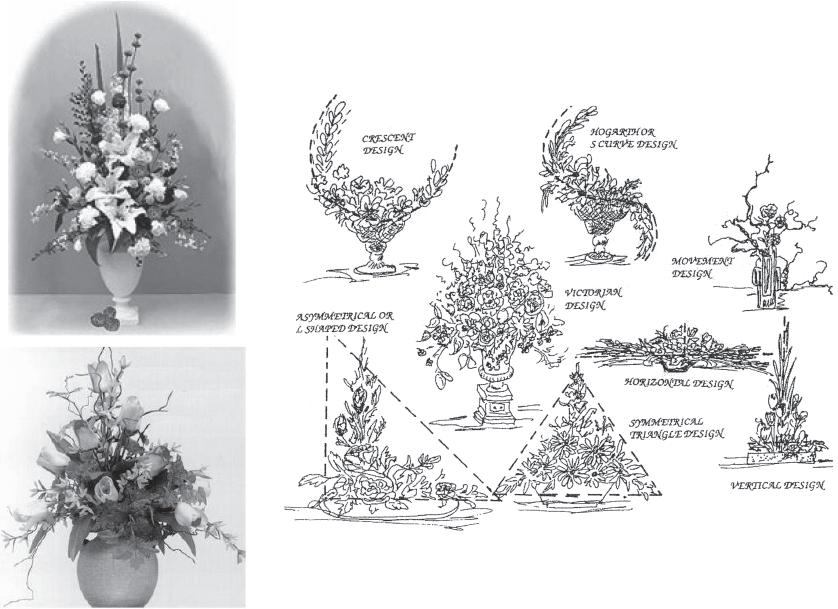
SUGGESTIONS FOR EXHIBITORS
WHAT YOU’LL NEED TO GET READY FOR THE SHOW: A sharp knife, a good set of gardening scissors, pruning shears, ratchet shears, a hammer, Stick-um adhesive putty, floral foam (check to see if it’s for wet or dry arrangements), and a good imagination!
CONDITIONING: It is essential to pick your flowers in time to let them harden before making your arrangements or preparing your exhibits. Flowers need to be cut properly and at the proper time. The best time is early morning; next is evening after sundown and dew is formed. Before putting in warm water, cut the stems again at a long angle with a very sharp knife. This opens the stems to take up the most amount of water. Flowers with woody stems should not be cut again, so crush the bottom 3” of the stem with a hammer to open it. Some flowers bleed when cut, so it
is necessary to seal the stem by burning the stems of poppies with a lighted match or sealing the stem with floral putty or placing stems in a shallow bowl of wood alcohol for half an hour. Flowers should be stripped of foliage on the lower third of the stem. In the case of roses, the thorns should be removed. Place the flowers in water with the lower third completely immersed.
GROOMING: remove evidence of disease, bugs, dust, stains, pollen, and any foreign material. If you can, bring a few extra blooms to the show in a separate container to replace any that may be damaged, but be sure not to include more blooms than the class calls for. A bud showing colour is considered to be a bloom. Check pansies for extra buds. For interest’s sake, specimen exhibits should be named if possible. “Ontario Judging & Exhibiting Standards for Horticulture and Floral Design” Publication 34/2003 is the judges’ guide, a great help to exhibitors.
DESIGN DIVISION
Judges look for specific principles when evaluating a design. These include:
Balance – which provides visual stability from any angle;
Rhythm – is the visual path which suggests motion in the design accomplished by the repetition of an element at intervals – these may be in line, form, colour, spacing or the repetition of curves or planes.
Proportion – is the relative amount of one area to another, i.e. the amount of plant material to the container, the amount of round forms to linear forms, the amount of rough texture to smooth;
Scale – the size relationship of all components;
Contrast – achieved by juxtaposing elements in such a way as to emphasize difference;
Dominance – the force of one element in the design which implies subordination of others.
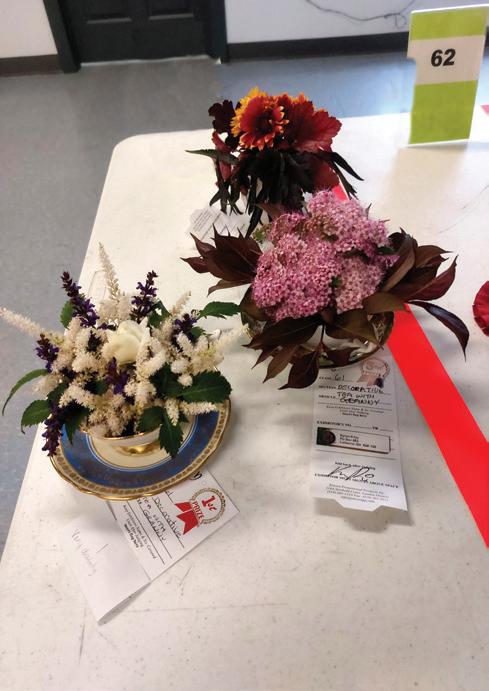
TREATMENT OF CUT FLOWERS
Flower When to Cut How to Treat
Aster Half to fully open Scrape ends of stem and stand in water full depth of stems for 2 hours. Add 1 tsp. sugar/qt. water
Chrysanthemum Fully open Break stems off plants, scrape & crush end of stems. Sear over flame
Dahlia Fully open Sear ends of stem in a flame then place in water with 1 handful of salt to 1 qt. of water
Daylily Half to fully open Flowers last 1 day only
Delphinium Lower part fully open Scrape ends of stem. Add l tsp.alcohol /2qt. water
Ferns Break off rather than cut stems & completely submerge in cool water for 12 hours
Gladiolus As 2nd flower opens Scrape ends of stem and place in strong vinegar water
Iris As 1st bud opens Scrape ends of stem
Peony Bud in colour to Scrape ends of stem part open
Rose As 2nd petal opens Scrape, crush or split ends of stems, dip in powdered alum and place in water. If rose tends to wilt, place ends of stem in boiling water for 5 minutes. Protect leaves, place full length of stem in warm water for 1 hour. Gentle blowing into the bloom will help it open. To keep early blooms for the show, refrigerate up to 3 days, place in water and put a plastic bag over bloom
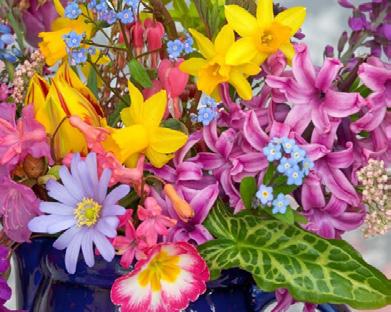
CRAMAHE ECOLOGY GARDEN
The Ecology Garden is located in Rotary Centennial Park and is a wonderful place to relax and enjoy nature at its best. You will find many different kinds of native and domestic plants and you can sit on a bench and listen to creek as it winds its way past the gardens. There are also raised beds that are planted with vegetables that can be picked and taken home to enjoy. With a number of “rooms” in the garden, you can find something of interest everywhere you look. If you are interested in looking after a room, you can call the Ecology Garden Director, Len Salvati at 905-355-5133 and he will be happy to talk to you.
Please join us in the Cramahe Ecology Garden, our growing concern!!
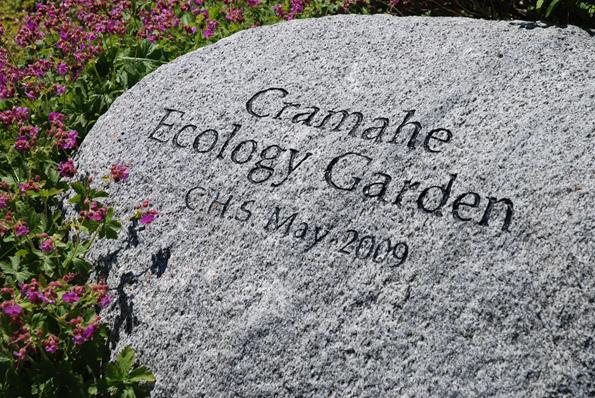
ENTRY TAG & EXHIBIT SUMMARY
Below are samples of the Entry Tag and the Exhibit Summary that are required for each show. Please try to have your tags filled out ahead of time. Be sure to check them for accuracy.
POINTS AVAILABLE IN FLOWER SHOWS
DECORATIVE SECTION
1st place 7 points
2nd “ 6 points
3rd “ 5 points
Awarded to non-winners 1 point
SPECIMENS, POTTED PLANTS, 1st place 4 points AND PHOTOGRAPHS
2nd “ 3 points
3rd “ 2 points
BEST IN SHOW, BEST PHOTOGRAPH Ribbons 5 points
MINI SPRING FLOWER SHOW
Tuesday, May 28, 2024
Please bring your entries in to the Keeler Centre between 5:30 and 6:30 p.m. There will be categories for daffodils, narcissus, tulips, crocus, etc. and sprays of spring bloomers.
NB: This show will be judged by CHS members using marbles.
Remember to attach an ENTRY TAG
Magic of Mushrooms and Fungi
Speaker: JoAnne Howes
Convener: Clair Breton and Len Salvati
PESTICIDE ALTERNATIVES worth trying:
Insecticidal Soap: 1 to 2 Tbsp. liquid soap (not detergent) with 1 quart water – spray on insects.
Apple Maggot Bait: Combine 1 cup vinegar, 1 cup sugar, 1 gallon water, 1 banana peel into an open plastic bottle – hang in an apple tree.
Ant Bait: Combine 1 tsp. boric acid, 6 Tbsp sugar, 2 cups boiling water – Saturate cotton balls with solution and place in a lidded plastic container with holes punched in the sides and bottom.
Slug Egg Stopper: Combine 10 parts water, 1 part ammonia. Spray over plant before foliage opens.
Dormant Oil Spray: Combine ½ pint mineral oil, 1 gallon warm water, 2 oz. liquid soap – spray on leaves in early spring, spray on fruit trees and roses on a winter day when the temperature is above freezing.
Earwig Bait: Combine equal parts molasses and canola oil – place in the garden in a tuna tin and empty daily.
Japanese Beetle Bait: Combine 2 cups water, 1 mashed banana, ½ cup sugar, ½ cup wine, ¼ tsp baking yeast – hang the fermented mixture in a tree.
Moss killer: Apply iron sulphate in spring or early fall.
Mosquito Repellants: Bounce Fabric Softener Sheets; Vick’s Vapor Rub; Avon Skin-So-Soft bath oil mixed about half and half with alcohol; pure Vanilla; or try eating a B1 vitamin tablet (Thiamine Hydrochloride 100 mg.) each day. Above all, avoid bananas at that time of year. Mosquitoes love banana oil as the body processes it.
Super Herbicide: Combine pot of boiling vinegar, 2 Tbsp. salt, 1 tsp. liquid soap – Pour when boiling on weeds in pavers or flagstones.
JUNE FLOWER SHOW
Tuesday, June 25, 2024
All exhibits must be in the Keeler Centre between 4:30 and 5:30pm, ready for judging.
Convenor: Karen Prins
Results are determined by a judge at this show. Judge will remain after judging to discuss the results.
RIBBONS ARE GIVEN FOR: BEST ROSE BEST DECORATIVE
HORTICULTURAL SECTION
Roses - Hybrid Tea
Floribunda
Grandiflora
Polyantha
BEST POTTED PLANT BEST EXHIBIT
1. One Bloom
2. One Spray
3. One Spray
4. One spray
Canadian Bred Roses 5. One spray (i.e. Explorer, Morden, Fleming, etc.)
Other Roses
Delphinium - one spike
Iris –
6. Shrub (including rugosa and Canadian bred) –one spray
7. Miniature (not mini flora) – one spray
8. English bred (i.e. David Austin) – one bloom or spray
9. Other (i.e. carpet, patio, ground cover) – one bloom or spray
10. Rose floating in a bowl
11. Blue
12. Any other colour
13. Tall bearded, blue/purple – one stalk
14. Tall bearded, pink – one stalk
15. Tall bearded, multicolour – one stalk
16. Tall bearded, any other solid colour – one stalk
17. Medium bearded, blue/purple – one stalk
18. Medium bearded, pink – one stalk
19. Medium bearded, multicolour – one stalk
20. Medium bearded, any other solid colour – one stalk
21. Beardless – (i.e. Siberian, Japanese) - three stalks alike
22. Bulbous, English, Spanish, Dutch – three stalks
23. Any other – multibloom – one stalk
Other Flowers
24. Bleeding Heart (dicentra) – one stem
25. Campanula – one stalk
26. Clematis – three blooms the same colour
27. Columbine – one stalk
28. Daylily – (hemerocalis, ie.Stella d’Oro) – one scape (may have additional buds)
29. Digitalis, Foxglove – one stem
30. Gaillardia – three stems
31. Hosta without bloom – three different cultivars
32. Lily (lilium), any variety – one stem
33. Pansy – three stems
34. Pelargonium – three blooms
35. Peony – Single – one bloom
36. Peony – Semi-double – pink, one bloom
37. Peony – Semi-double – white, one bloom
38. Peony – Semi-double – red, one bloom
39. Peony – Double – pink, one bloom
40 Peony – Double – white, one bloom
41. Peony – Double – red, one bloom
42. Peony – any other, one bloom
43. Loosestrife – 3 stems
44. Any annual – one stem or bloom
45. Any other biennial – one stem
46. Any other biennial – three stems
47. Any other perennial – one stem
48. Any other perennial – three stems
POTTED PLANTS – should be owned by exhibitor for at least 3 months (see rules)
African Violets (one pot - all, except trailing, must have single crown)
49. Single, any colour
50. Double or semi-double, any colour
Flowering Potted Plants (no larger than 24 inches in any direction - grown primarily for flowers)
51. Succulent (includes cacti)
52. Pelargonium
53. Gloxinia
54. Ivy Geranium
55. Orchid
56. Any other
Foliage Potted Plants (no larger than 24 inches in any direction - grown primarily for interesting foliage)
57. Begonia
58. Collection of cacti and or succulents
59. Succulent without flower
60. Any other
DECORATIVE SECTION
61. “June Wedding” – church pew decoration – can use ribbon, greenery, flowers
62. “Dance” – a design in a shoe
63. “Soft Colours of Summer” – a Vertical design
64. “Suits me to a Tea” – a design in a tea cup
65. “Hot, Hot, Hot” – a Mass design
66. “One of a Kind” – design with only one kind of flower
Please see Yearbook for definitions of design.
VEGETABLE, FLOWER AND DECORATIVE FLOWER SHOW
Please bring entries to the Keeler Centre between 4:30 – 5:30pm, ready for judging.
Tuesday, September 24, 2024
Tips For Photographing Plants For Shows and Enjoyment Speaker: DONNA EDWARDS
Convenor: JoAnne Titus
Nomination for officers for 2024
VEGETABLES
1. Beans – any variety - 5
2. Beets – roots on tops trimmed to 1” - 3
3. Carrots – any variety - roots on, tops trimmed to 1” above crown – 3
4. Cucumber – any variety – 3
5. Kale/Chard – 3 leaves
6. Sweet Pepper – any variety – 1
7. Hot Pepper – any variety – 3
8. Potatoes – White – brushed clean, – 3
9. Potatoes – any colour – 3
10. Squash – Summer – 1
11. Squash – Winter – 1
12. Tomatoes – large (2 1/2”) with calyx, named if possible – 1
HORTICULTURE
GLADIOLUS – any size florets
20. Gladiolus – large – 1 spike
21. Gladiolus – small – 1 spike
22. Collection – a variety of colours – maximum 9 spikes
23. Collection – same variety – 3 spikes
24. Aster – annual or perennial – 1 ste
25. Cosmos – any variety – 3 stems
26. Echinacea – any variety – 3 stems
27. Hydrangea – any variety – 1 stem
28. Pelargonium (annual geranium) – 1 flower head with foliage
DAHLIAS – in a vase with stem and own foliage
38. Decorative – any size – 1 stem
39. Cactus/Semi-Cactus – any size – 1 stem
13. Tomatoes – medium (up to 2 1/2”) with calyx –named if possible -3
14. Tomatoes – any Heritage – with calyx – named if possible – 3
15. Tomatoes – Cherry – any variety with calyx, named if possible – 6
16. Herb Collection – picked – minimum 5
17. Any Other Heritage Vegetable – named - 1
18. Any Other Vegetable – named - 1
19. Vegetable Basket – collection of at least 5 different vegetables – 1-3 of each kind, named
29. Phlox – annual or perennial – 1 stem – named if possible
30. Fall Blooming Rose – any variety – 1 stem or spray
31. Sedum – any variety – 1 stem
32. Snapdragons – any variety – 3 stems
33. Sunflower – any variety - 1 stem
34. Zinnia – any variety – 3 stems
35. Any Other Annual – 3 stems
36. Any Other Perennial – 3 stems
37. Collection – Annual and/or Perennials, minimum of 7, named
40. Ball - any size – 3 stems
ORANGE NASTURTIUM – FLOWER OF THE YEAR
DECORATIVE
41. “Found in the Fence Row” - an arrangement (combination of fresh/dried plant materials, with/without accessories)
42. “Fall Splendor” - a Mass design (design with a large quantity of plant material arranged in close silhouette with few or no voids)
43. “Herbal Blend” - flowering and green herbs in a kitchen container
OCTOBER PHOTOGRAPHY SHOW
And Other Garden Related Media
Please bring your photographs to the Keeler Centre between 5:30 and 6:30pm, ready for judging. Garden Related Media – paintings, needlework, etc. may be brought at 7:00pm for the Show-Off Table.
Tuesday October 22, 2024
All About House Plants Speaker: JENNIFER GUERTIN
PHOTOGRAPHY SHOW – Convenor: Valerie Detenbeck
Nominations for officers for 2024
PHOTOGRAPHY SHOW
CATEGORIES FOR PHOTOGRAPH ENTRIES
1. On the Lake – any season
2. A Lilly by any other name (any Lillys)
3. A Spring Bouquet (assortment of flowers)
4. Pots/Planters (planters/pots pack a punch or put on a show)
5. Down the Lane - a perspective
ENTRY RULES
1. Members may submit only one entry per class.
6. Same tree, different seasons – 2, 3, or 4 views/pictures
7. The Maple Leaf Forever – leaves in Autumn
8. Wildflowers – single, bouquet or field
2. Photos should be 4” x 6”, mounted on stiff board, measuring 5” x 7” overall.
3. At the judge’s discretion, classes may also be subdivided, i.e. distance and close-up.
4. The judge will choose the photo from among the entries which, in his/her opinion, is Best in Show, whether or not that photo has won in its class.
PHOTO TIPS from NEVILLE GLENN
• Make sure the flower appears large and fills your camera screen; if possible use Macro.
• Try to get the background as plain as possible so as not to distract from the flower.
• For best colours, take the photo with morning or late afternoon light.
RIBBONS are given for: BEST PHOTO IN SHOW
2023 AWARDS AND TROPHIES
Arthur and Marjorie Rutherford Trophy Valerie Dentenbeck Awarded annually to the exhibitor with the most points in shows over the season.
Hoselton Studio Trophy Pat Campbell Awarded annually to the novice with the most points.
Joan and Harold Harnden Silver Rose Bowl
Valerie Dentenbeck Awarded annually to the exhibitor with the most points in the Decorative Section.
Amy Gresham Memorial Trophy Pat Johnston Awarded annually to the exhibitor with the most points for the ‘Flower of the Year’ – COSMOS .
25th Anniversary Trophy
Valerie Dentenbeck Awarded annually to the exhibitor with the most points in the Potted Plant Section (trophy donated by Joan Fawcett).
Canadian Imperial Bank of Commerce Rose Bowl
Valerie Dentenbeck Awarded annually to the exhibitor with the most points for Roses.
Photography Trophy Cori Hall Awarded annually to the exhibitor with the most points in the Photography Section (trophy donated by Lenna Broatch).
Members Memorial Trophy Shirley Ross Awarded annually to the exhibitor with the most marbles in the Mini Spring Flower Show.
2023 CERTIFICATES OF PARTICIPATION IN SHOWS
GLOSSARY OF TERMS
Mark Cullen defined the terms used to describe plants in the following way:
Genus: The family or large group from which a plant is derived.
Species: A group of plants capable of interbreeding and producing fertile offspring.
Variety: This is the last name on a plant label often denoting hybridization. For example: Paeonia lactiflora Doreen. Paeonia is the genus, lactiflora is the species and Doreen is the variety or cultivar.
Other Useful Terms:
Open Pollinated: This term is usually associated with vegetables. These are cultivars that have been pollinated naturally by insects, wind or self-pollination. The seeds of these vegetables will produce plants that are true to the parent plants.
Hybrid: Two closely related species are mated mostly synthetically in order to produce an improvement over the originals. In the case of flowering plants this would involve either colour or a longer flowering period or, in the case of vegetables, better flavour and improved productivity. The downside is that the seeds of such plants will not necessarily be identical to the parent.
Organic: Seeds and plants that carry this label have been produced under strict guidelines and regulations. The land on which these plants were grown has been free of toxic chemicals for at least three years and they have been grown strictly without the use of synthetic fertilizers and pesticides. The use of sewage sludge, irradiation and genetic engineering are also prohibited.
Heirloom: These plants have a history of at least 50 years of open pollination. Such vegetables often have a better flavour than newer hybrids. It is important to note that, in the past 40 years of so, we have lost more than 2,000 fruit and vegetable cultivars. The Centre for Biodiversity and Conservation in the U.S. estimates that 96 per cent of the commercial vegetable cultivars that were available in 1903 are now extinct.

BRING SPRING EARLY INTO YOUR HOME!
Towards the end of February select branches of spring flowering shrubs to bring indoors. Choose your specimens carefully so that the overall appearance of the shrub is not compromised and cut next to an outward facing bud. A mild day when the temperature is above freezing makes this a pleasant task and helps the branches to make a successful move into the warmth. Put the branches into warm water and add a flower preservative to help prolong the vase life. Keep the container in a cool, partially shaded place until the buds start to show colour. Then move the flowering branches into your chosen location.
Forsythia and Pussy Willow respond well to this treatment. Other shrubs than can be forced are Bridle Wreath Spirea, Flowering Quince, Honeysuckle, Serviceberry and Redtwig Dogwood. It is best to cut Lilac, Mock Orange and Rhododendron later in March.
